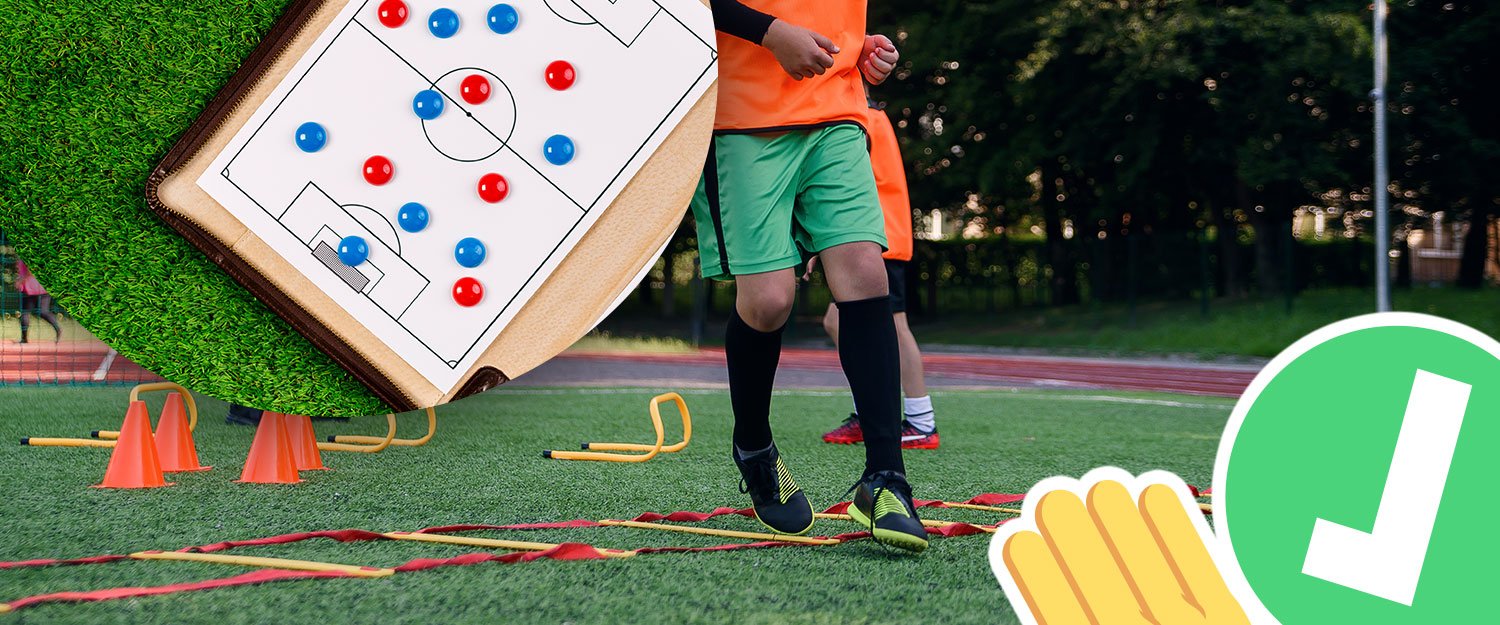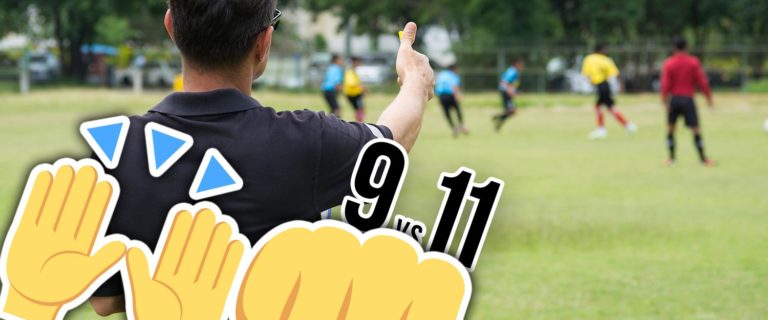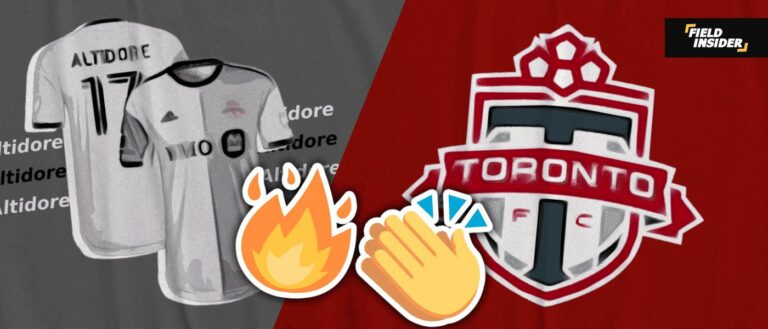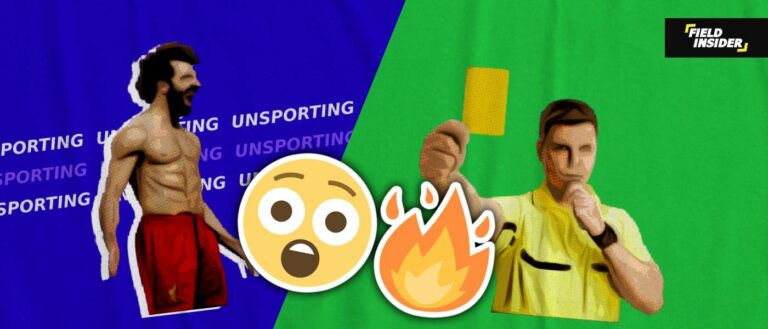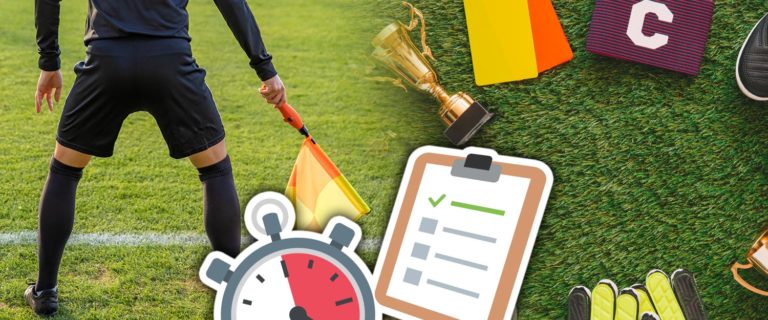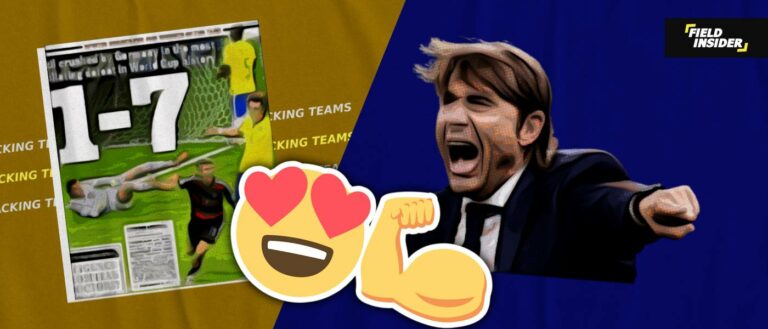Technical vs Tactical vs Positional Training: Football Basics
Football has made a lot of progress in recent years. Mainly, has placed increased demand on footballers as training sessions are more and more intense. To be a professional football player you have to perform football tasks at a much higher level than before. That requires a high level of endurance, power and reaction rate.
There will be technical, as well tactical details which this blog enfolds, make sure you read till the end because it’s going to be a crazy informative ride today. We will be covering the basics of technical, tactical, and positional training, as evident by the title already.
Training Schedule – Micro Cycle
First of all, a micro cycle refers to the structure of a small training cycle that generally lasts 7 days and which is composed of training days with one or more training sessions during the day. There are several types of micro cycles, and they are:
- Preparatory training session
- Specifically – introductory level
- Percussion training
- Situation scenarios
- Competitive
- Recovering session
Within the micro cycle with one game playing, we have 7 training sessions, one game and one day off. The training session intensity differs during the week. Immediately after the match (the next day or the first workout), faster recovery is needed. That is why it is scheduled for a small or medium-intensity session.
aerobic training:
Later on, aerobic work should include other means of recovery, such as pool, massage, sauna, etc. After regeneration training and passive rest on Tuesday morning follows introductory training of an aerobic character, predominantly fitness, while the afternoon is reserved for high-intensity technical-tactical training character.
Aerobic training is generally medium-intensity training and lasts for a long time. Stretching warm-up is usually practiced before aerobic training. Finally, after the training itself which can be 20 minutes long or more, the muscles stretch again during the recovery phase.
Tuesday
Introductory, restorative training (aerobic training, body preparation, technique…) which is done on Tuesday mornings should last 75 minutes. High-intensity training (te-ta training, fitness, prevention…) is done on Tuesday afternoon and the duration of this training should be 90 minutes. The goal of this training is to train, develop or improve these te-ta resources development or maintenance of functional and motor abilities.
Wednesday
On Wednesday morning, players usually have a gym session scheduled. In the afternoon, there is high-intensity training with technical-tactical and plyometric exercises. Training that contains plyometric exercises should be limited to 2 or at most 3 times a week. Plyometric exercises, especially the harder ones, are always completed at the beginning of training when the athlete is rested.
The exercises are usually done in 4 series with 10 repetitions, the break between the sets is from 90 to 120 seconds. Plyometric training improves the development of explosive leg strength, improves the jumping of players and the upper body.
Thursday
Thursday morning is free, and during the afternoon you have medium intensity training of technical-tactical character with speed elements. Speed is the ability to react quickly and perform one or more (frequency) movements.
Exercises used to increase speed should be well practiced and performed with maximum intensity; duration 7-10 minutes per series, with recovery breaks of 3-8 minutes. 3-5 series should be done in one training, depending on the level of preparation of the athlete.
A significant ability in almost all sports is speed endurance (ability combined with speed and endurance). It represents the ability to overcome the greatest possible effort that lasts up to 2 minutes.
Friday
Friday is a classic technical-tactical training before a medium-intensity match. On the day of the match can organize toning training lasting 30 minute containing elements of dynamic flexibility.
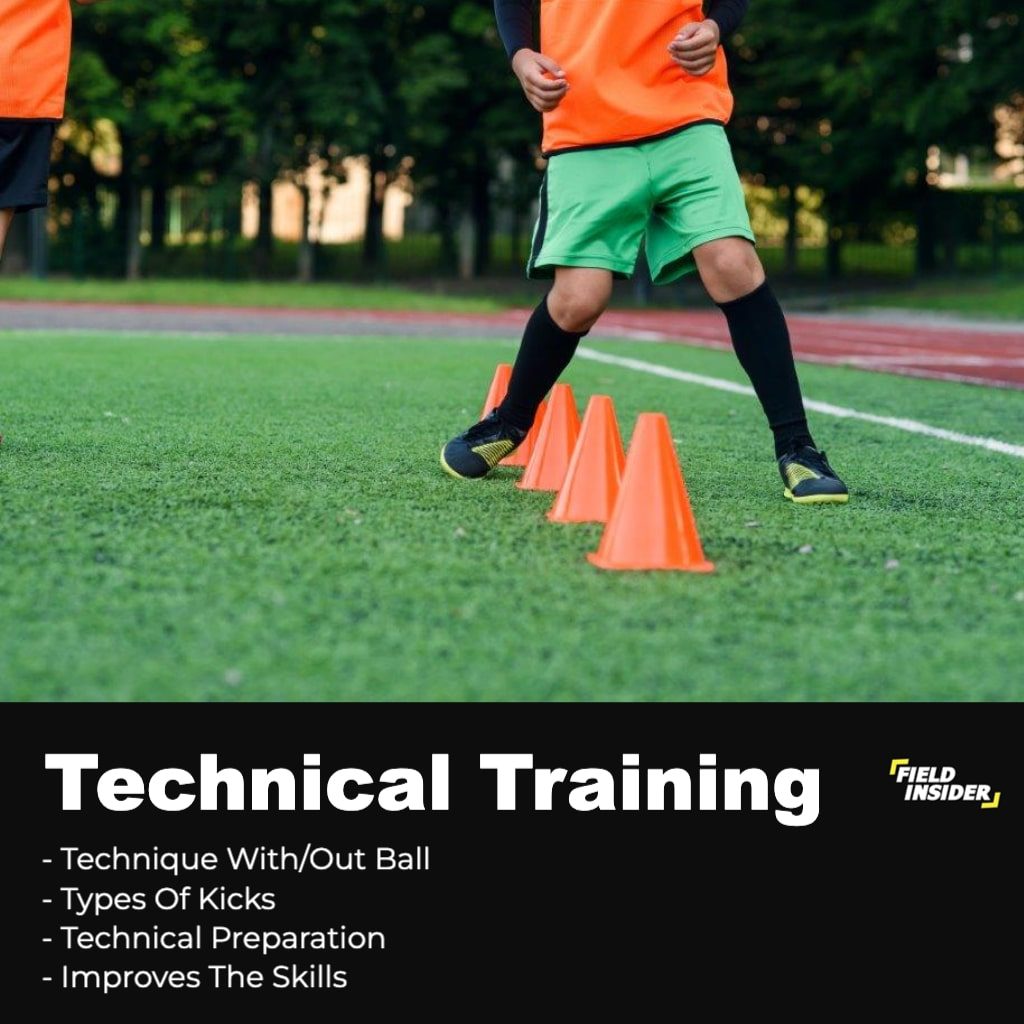
Technical Training in Soccer
Technique in football represents an applicable, rational and efficient solution of football game situations for the sake of success in the competition. It is in an inseparable connection with other aspects of football. It includes dexterity, skill, and aptitude. Eventually, the technique can be divided into the technique without the ball and the technique with the ball.
- Technique without Ball:
- Walking – Football walk, meek, provides a quick transition to a new form of movement.
- Running – the basic means of movement, backwards, cross and foot step.
- Jumps – an integral part of most of these exercises, with the reflection of one and both feet, in all directions.
- Stopping – Jumping and stepping out.
- Turns – the dominant form of movement during game.
- Technique with the Ball:
- Shots – the leading mean of the game. Practice all kind of shots, foot technique, headers, out of place, in the run, set pieces.
- Receipts – with head, chest, leg. Working on soft reception, improving ball control.
- Guidance – a condition for the correct performance of many elements. Straight, lateral movement, circular, arcuate, zigzag.
- Dribbling and feints – removing the opponent from the path of the ball. Twisting and deflecting the torso, dribbling with the lower part of the body.
types of kicks & words to keep by:
Much of the technical training with the ball is focused on kicking techniques and understanding different shooting styles. Types of the kicks on the ball are with the:
- Inside of the foot
- Inside of the ridge of the foot
- Ridge of the foot
- Tip of the foot-spike
- Outside of the ridge of the foot
- Heel.
Modern football requires footballers of exceptional skills. Hence work on training, coaching and perfecting the technique is essential. The technique of football encompasses many different movements with and without the ball, which are manifested in various ways in the game.
Simplicity and rationality, freedom and lightness, speed and elegance, safety and efficiency, are indispensable characteristics of every successful technical performance in football.
technical prep:
Thanks to impeccable technical preparation, many football players, despite their modest physical predispositions, achieve significant results, and vice versa – many football players, who are technically uneducated, achieve poor results despite their distinct physical abilities.
Technique training should be included in every training with the ball. They can be in the introductory part of the training where the familiar technique with the ball is done, as well as in the main part of the training where the goal is to improve the skills of individuals.
Tactical Training in Soccer
Tactics refers to a game plan, prepared in order to outplay the opponent’s game plan during the game and score more goals. Eventually, tactical approach can be divided into two moments of the game:
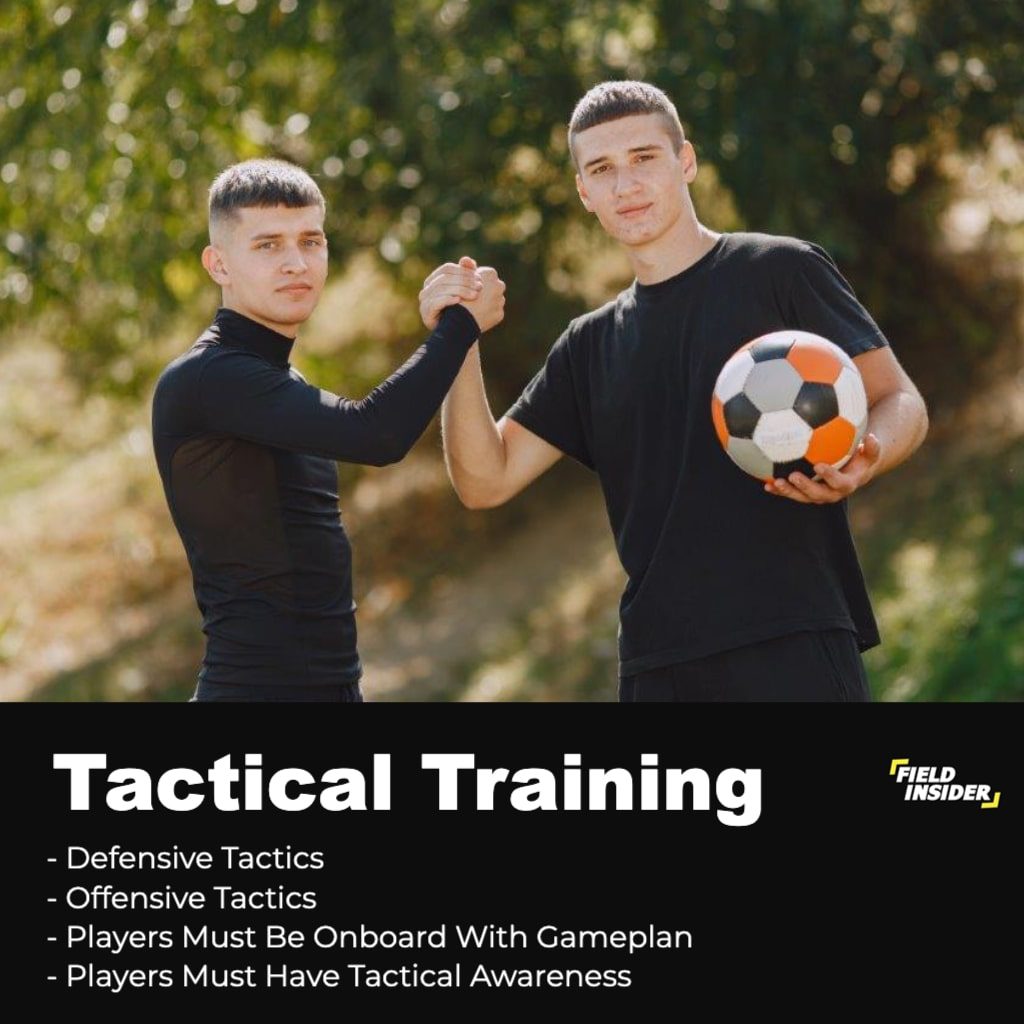
- Defending
- Attacking
The goal of the tactic is to defend and score. Therefore success in the realization of the tactical plan is closely related to the fitness, technical and tactical training of the football players. The following factors in preparing a tactical training plan should be considered:
- Ability and training of one’s own team, strengths and weaknesses
- An opponent with all his abilities and shortcomings
- Tactical plan of the opponent
- Position on the table
- Current result
- Some of the standard situations, are free kick, indirect kick, corner kick
- Weather conditions, great heat, rain, wind
- Size of the playing field
more details:
A football game consists of alternately attacking an opponent’s goal and defending your goal. According to that fact, football tactics are divided into Defense and Attack tactics.
Basically, the product of tactical thinking is observation and analysis of the players’ situation and finding the optimal way to solve the tactical task in the shortest period of time. In relation to conditions and situations in the game, make feasible decisions, which are quick and appropriate.
Tactical training should be done several times during the week. However, one should carefully analyze all the qualities and weaknesses of the opposing team and, depending on that, prepare tactics for the match. Tactics in defense are just as important as tactics in attack movement.
Every player needs to know what to do when the ball is in a certain part of the field. Additionally, practicing defensive and offensive interruption is a very important aspect of tactics. The tactic is best practiced in a two-goal game.
Positional Training
Individual tactics are the basis for all tactical upgrades, but without good positional training we cannot have a good individually tactically trained player. In modern football, everyone plays in all positions, from the goalkeeper onwards, and everyone runs! The match lasts on average 58-68 minutes of active play.

guiding rules:
Position play is a planned activity of a player in defence or attack, regardless of his positional role in the system, which successfully solves situations that occur in the game. Positional tactics include knowledge of the tasks and requirements of that particular position and positional change in formation. The positional game includes some guiding rules:
- Go to meet the ball that is moving towards you
- Don’t miss the ball that passes next to you
- Move away from the opponent in possession of the ball
- Quickly approach the player to whom the ball is sent
- Form a pair with a teammate in defense
- Create a surplus of players in the attack phase and the defense phase
- Position yourself between the ball and the opponent’s player
- In the defense phase, do not lose the ball from the view
- Play as much as explosive and faster for change of positions
- Play brief ball possessions
- Before receiving the ball, orient yourself to be aware of the situation
Moreover, positional training should be a part of every training with the ball. The player in each position needs to know what his task is. Fulfilling these tasks leads to the successful implementation of tactics.
Conclusion
In conclusion, it is significant to note that as football is constantly changing and evolving, new tactical challenges are emerging. Furthermore, it is essential to understand different tactical approaches and adapt to the conditions of the game. Modern football is characterized by an attacking mentality and flexible formations.
As a result, player require a high level of technical knowledge and abilities. In order to quickly respond to the game conditions, players use their technical skills to adapt and react accordingly. Complex playing environment requires adequate football training sessions planning, with all three areas improving simultaneously, as that is the only way to accomplish a high level of performance in competitive matches.


